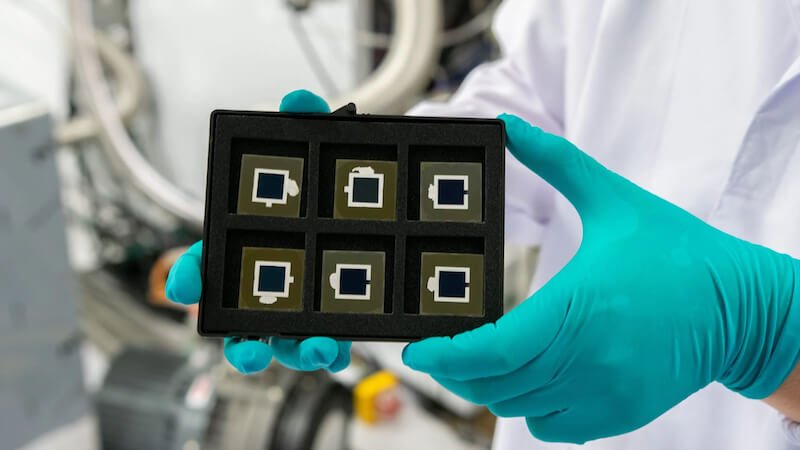
Researchers from Singapore recently achieved a new efficiency record by making a tandem solar cell made of silicon and perovskite. Cyanoic acid played a big role in this.
Expanding solar capacity is a high priority in many countries. As new solar parks are being built in many places, demand for the technology is increasing. Due to limited areas, scientists are developing ever more efficient solar cells in order to be able to generate more energy on the same area.
Researchers at the National University of Singapore (NUS) recently reached another milestone. They developed a novel triple junction perovskite/silicon tandem solar cell. In initial tests, this achieved a world record-breaking efficiency of 27.1 percent on a solar energy absorption surface of one square centimeter. This represents the highest performance to date for such a solar cell.
Researchers achieve record efficiency with tandem solar cell
The breakthrough was made possible by the development of a new perovskite solar cell with integrated cyanic acid. The researchers took advantage of the fact that several layers of solar cells can be assembled to form a multi-junction solar cell. This increases efficiency.
Each layer is made of different photovoltaic materials and absorbs solar energy in different spectrums. However, there are still many challenges with current multi-junction solar cells. These include energy losses, voltage that is too low and instability during operation.
With their results, the researchers demonstrated for the first time the successful integration of cyanic acid into a perovskite solar cell. In the best case scenario, the development will result in a state-of-the-art triple junction perovskite/silicon tandem solar cell that outperforms other models.
Adaptation of the components enables flexible coverage of the energy range
The interactions between the components of the perovskite structure determine the energy range that the cell can achieve. By adjusting the ratio of these components or finding alternative materials, the perovskite's energy range can be further modified, according to the researchers.
Previous research has not yet revealed a perovskite composition that covers an ultra-wide energy range with high efficiency. However, further analyzes of the new perovskite atomic structure provided additional results.
For example, the inclusion of cyanic acid helps to stabilize the structure and form key interactions within the perovskite.
Also interesting:
Source: https://www.basicthinking.de/blog/2024/03/15/singapur-rekord-solarzellen/


